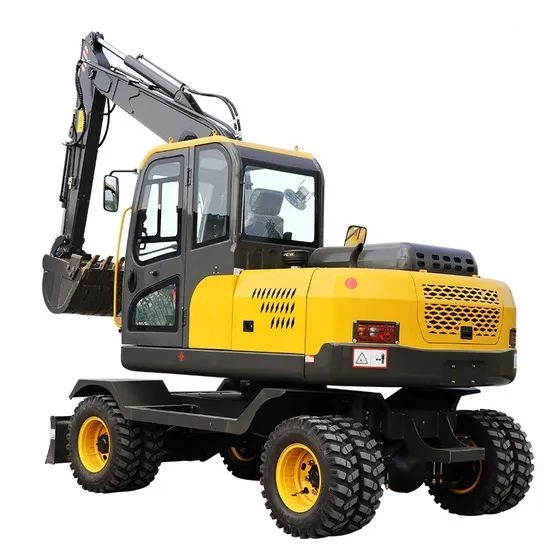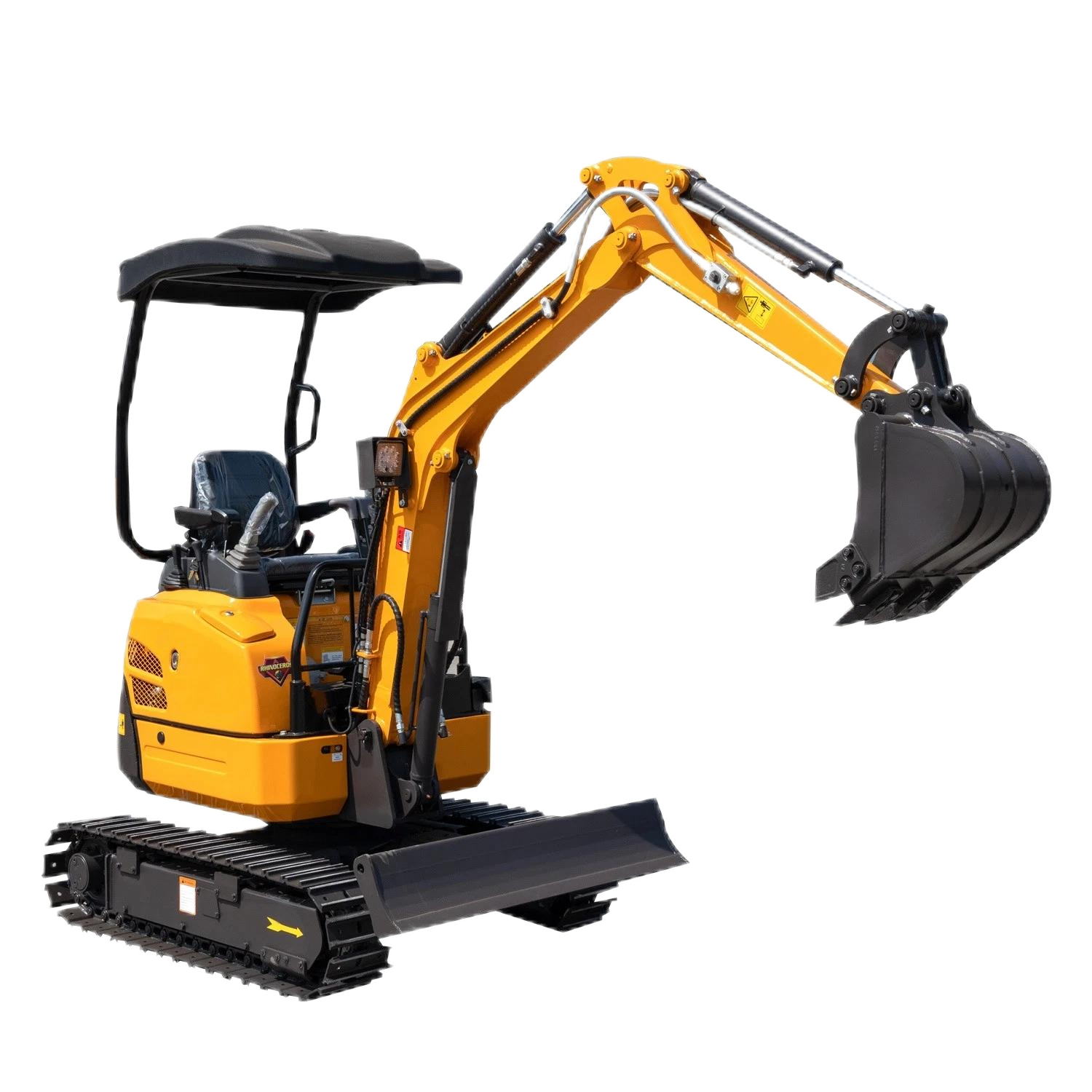The scope of application of wheeled excavators and crawler excavators is not simply a matter of "which is broader"; instead, each has its own focus, depending on factors such as the working environment and task requirements. There are obvious differences in their applicable scenarios, which are analyzed in detail from multiple dimensions as follows:

I. Core Applicable Scenarios of Wheeled Excavators
Thanks to the characteristics of tire travel, wheeled excavators are more suitable for hardened roads, medium and low-intensity operations, and scenarios requiring frequent transfers. Specifically, they include:
- Urban infrastructure and municipal engineering
- Such as urban road maintenance, pipeline laying, and green belt sorting. Tires cause little damage to the road surface (they will not damage asphalt or cement roads) and can legally drive on urban roads (in some areas, a special vehicle pass is required), making them suitable for operations in areas with high requirements for road surface protection, such as residential areas and commercial districts.
- For example: When digging drainage ditches or repairing curbs in a community, wheeled excavators can drive in directly without the need for additional trailer transportation.
- Operations requiring frequent short-distance transfers
- Tires have a high driving speed (usually up to 30-40 km/h), making them suitable for short-distance movement between multiple construction sites. This eliminates the trouble of crawler excavators relying on trailer transportation, saving time and costs.
- For example: In multiple small farmland renovation projects in rural areas, wheeled excavators can travel back and forth on their own, resulting in higher efficiency.
- Light earthwork and loading/unloading operations
- Suitable for sites with loose soil and no hard rocks, such as farmland renovation, small site leveling, and loading/unloading of bulk materials (sand, gravel, construction waste).
- However, due to the large ground pressure of tires (pressure per unit area), they are prone to slipping and getting stuck in muddy and soft soil areas, and are not suitable for heavy loads or complex terrains.
- Indoor or space-constrained scenarios
- Some small wheeled excavators (such as 1-3 ton models) are compact in size and can perform light demolition and material handling operations in factories and warehouses. Tires also cause less wear to the ground than crawlers.
II. Core Applicable Scenarios of Crawler Excavators
Crawler excavators come into contact with the ground through crawlers, with low ground pressure and large traction. They are more suitable for complex terrains, high-intensity operations, and harsh environments. Specifically, they include:

- Field and complex terrain operations
- Such as mining, mountain road construction, and forest land clearing. Crawlers can travel stably on muddy, swampy, steep slopes (usually with a slope of more than 30°), gravel piles, and other road surfaces, and are not prone to slipping and getting stuck.
- For example: When building mountain roads, crawler excavators can work on steep slopes without hardened roads, while wheeled excavators are difficult to pass.
- Heavy-load and high-intensity earthwork projects
- Suitable for large site leveling, deep foundation pit excavation, and hard rock crushing. The stability of crawlers enables them to withstand greater digging force (usually, crawler excavators have larger tonnages, ranging from 10 tons to hundreds of tons), and the machine body is not easy to shake during operation.
- For example: In the foundation excavation of large industrial parks, crawler excavators can efficiently handle hard soil and stone layers, while wheeled excavators may be unable to do so due to insufficient power or stability.
- Operations in harsh environments
- In muddy farmland during the rainy season, sludge cleaning after floods, and snow-covered sites, the grip and passability of crawlers are far better than those of tires, making them less likely to get stuck.
- Scenarios requiring precise operations
- Crawler excavators have a more stable body. When hoisting heavy objects (such as pipes and small equipment) or accurately leveling the ground, they have higher precision and are less likely to shake due to slight unevenness of the ground.
III. Comparative Summary of Application Scopes
| Dimension | Wheeled Excavators | Crawler Excavators |
|---|---|---|
| Road surface requirements | Hardened roads (highways, cement grounds) | No special requirements (muddy, gravel, steep slopes, etc.) |
| Transfer convenience | Can transfer short distances on their own without a trailer | Rely on trailer transportation, with high transfer costs |
| Operation intensity | Medium and low intensity, suitable for light earthwork and loading/unloading | High intensity, suitable for heavy loads, crushing, and mining operations |
| Terrain adaptability | Only suitable for flat and non-muddy sites | All-terrain (including harsh environments) |
| Road surface protection | Cause little damage to the road surface | Crawlers may scratch hardened road surfaces |
IV. Conclusion: The Scope of Application "Has Its Own Focus" Rather Than "Wheeled Ones Are Broader"
- The advantages of wheeled excavators lie in urban areas, hardened roads, short-distance transfers, and light operations, and their applicable scenarios are more inclined to "standardized, low-destructive" environments;
- The advantages of crawler excavators lie in the wild, complex terrains, and high-intensity operations, and their applicable scenarios are more inclined to "non-standardized, high-difficulty" environments.
Therefore, the application scopes of the two are complementary rather than "which covers a broader range". In actual selection, a comprehensive judgment should be made based on factors such as the working environment, intensity, and transfer needs. For example, wheeled excavators are chosen for urban municipal engineering, and crawler excavators are chosen for mining sites.





